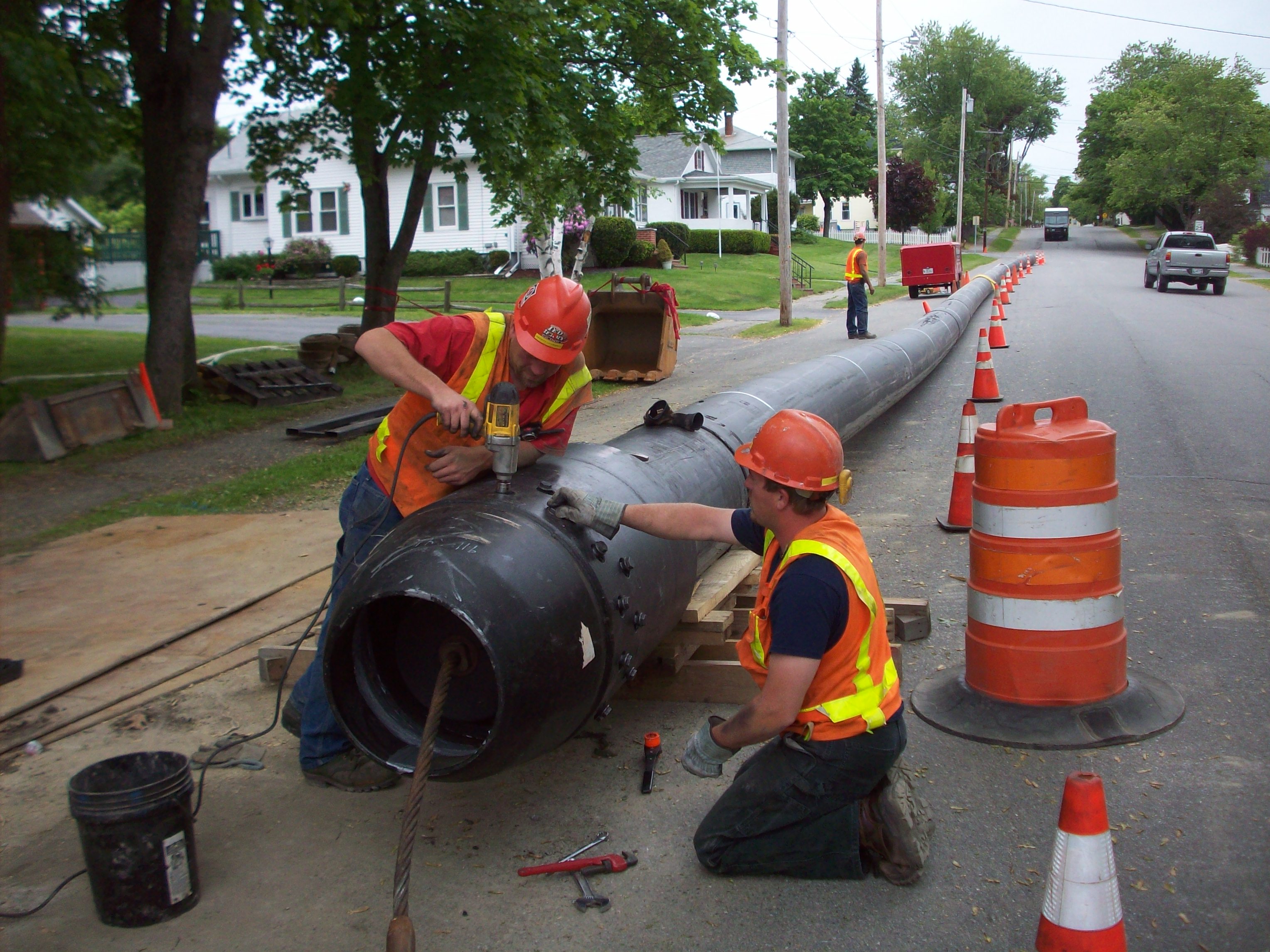May 2011, Vol. 66 No. 5
Features
Pipe Bursting – Terminology And Lingo: What Does It All Mean?

Pipe bursting, like many technologies today, has its own set of lingo or jargon which often times makes it difficult to understand for someone new to the industry or without a lot of direct experience with the technology.
Let’s start with the basics. The IPBA recognizes two primary types of pipe bursting: “static pipe bursting” and “pneumatic pipe bursting.” Over the years, there have been other forms or variations of pipe bursting. However, the technology has matured into these two primary methods.
Static pipe bursting is a method of replacing an existing pipe by exerting enough hydraulic force on a tool designed to cut or “burst” the pipe while pulling an “expander head” through the existing pipe path and expanding the surrounding soil to an outside diameter (O.D.) approximately 20 percent larger than the O.D. of a new pipe that is simultaneously being pulled into place.
Pneumatic pipe bursting accomplishes the same work but instead of requiring significant hydraulic forces, uses a much lower hydraulic force with a pneumatic hammer that assists the bursting tool and expander head while once again pulling the new pipe into place. Often times pneumatic pipe bursting will be called “dynamic” pipe bursting and static pipe bursting will be called “hydraulic” pipe bursting. Although these terms are not wrong, references like “hydraulic” pipe bursting can often be confused with an older method that used hydraulically operated heads and are no longer common. The industry typically uses “static” as the most common terminology.
Confusion
Where confusion can often be generated is when manufacturers, contractors or engineers use their trade names for different parts of the system or the method itself, leaving many wondering “what does this all mean?” Some will call a pneumatic hammer a “Hammerhead” (a trade name), a “Grundomole” (again another trade name”, a “mole” (from the pneumatic piercing tool industry), and many names in between. Remember, in construction everyone likes to use their own jargon. For example, often “Bobcat” and “skid steer,” are incorrectly used interchangeably. The same is true with pipe bursting.
One area that has a variety of terms all meaning similar things are pits required for pipe bursting. Dr. Jason Leuke of Arizona State stated that pipe bursting should be emphasized as a trenchless technology and not a trench-free technology because often people new to the industry do not understand that there will be some digging on a pipe bursting project. (Typically only 10-20 percent of an open-cut project, but still digging is required). Once everyone understands that there will be some digging on a pipe burst project it is important to understand what those pits are called and their purpose.
An “insertion pit,” “pipe pit” and “launch pit” are the same names for a pit used to get the pipe into the ground once hooked to the pipe bursting tooling. The type of pipe being installed, whether HDPE, PVC, fusible PVC, DI or others, will all require slightly different pits. It is very important that everyone involved in the project understand what the configuration needs to be to ensure success.
“Machine pits,” “receiving pits,” “pull pits” and “exit pits” are again all names for similar pits that are required for the end of the pipe burst project opposite the “insertion pit.” Depending on the method (static or pneumatic), the size and type of pipe being installed, depth, configuration of the tooling and expander head being used, will all dictate the requirements of this pit(s). “Service pits,” or “lateral pits” are also required for reconnection of sewer laterals, water service lines, gas services or other connections needed to the mainline.
Tooling
The tooling that is used to physically “burst” the pipe and expand the ground again will have many different names and configurations. It is important to differentiate between industry terms and jargon from the field. From “pilots,” “schnozzles,” ” bullets,” “ splitters,” “slitters,” “blade sets,” “bladed starters,” “moles,” and many others each serving a very unique and specific purpose. In a static system, a solid steel rod is fed through the existing pipe which will handle the full load of the burst. These rods have a variety of designs that are common in the industry. There are two widely-used rod configurations in the market: an “API” style rod similar to that used in the drilling industry; and a “quick lock” rod manufactured by TT Technologies. Both of these rod systems have been proven and work when used in accordance with the manufacturer’s recommendations.
It goes without saying that a full understanding of the pipe bursting method, tooling, pipe burst system and construction requirements is required by all members of your project team from conception through design, bidding and through construction. If you don’t think you fully understand the “lingo” being used by someone on the work team it is okay to ask: “what is this and why is it important for this project?”
There are many manuals of practice available through organizations like IPBA, ASCE, NASTT, APWA and others which will usually include a glossary of terms. It is a good idea to have those available when planning your project. Through continued education involving utility system owners, engineers, manufacturers, contractors and field crews, pipe bursting can continue to become a method of choice for rehabilitating failing underground infrastructure in your community.
Coming in June: What types of pipes can be burst and what types of pipes can be installed using pipe bursting?
FOR MORE INFORMATION:
NASSCO, (410) 486-3500, www.nassco.org




Comments